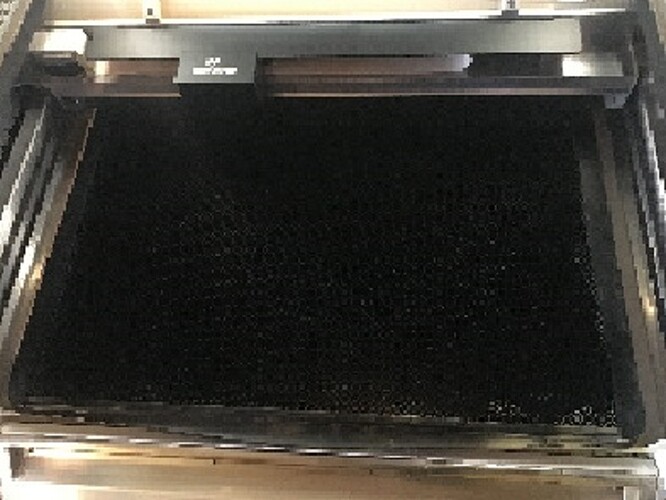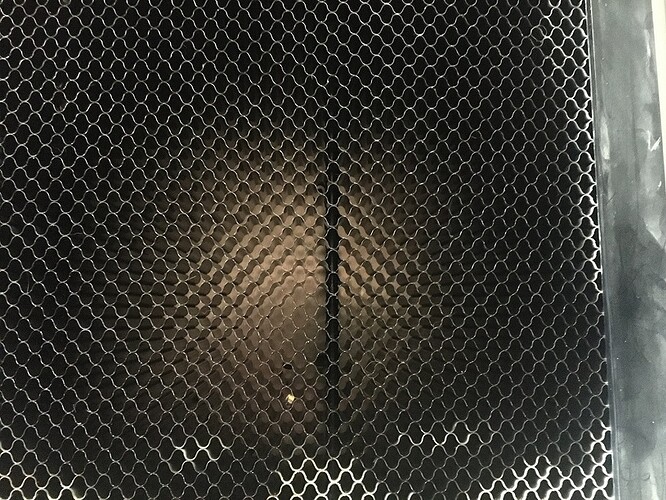I think I might have screwed up big time. I thought I had come up with a nifty time-saving idea by using vinyl contact paper to tape the MGF I bought from Rugby’s instead of 2" masking tape. Unfortunately, I searched the forum for advice about that AFTER I cut out some Christmas ornaments. Now my GF is acting weird. It’s taking forever to center, some cuts are coming out as engravings and some cuts don’t cut all the way through the the PB. I hope someone can reassure me I didn’t just ruin my GF. Feedback, please?
Well… The sad truth is that you might have. Got any pictures of the interior?
Got a link to the “vinyl” contact paper? Some vinyls aren’t actually PVC, and if not then that’s not your issue.
The “cuts coming out as engraves” isn’t really a symptom of chlorine damage… A lot will get more clear when there are pics and a link to your adhesive film.
Read up on that material. It may be ok to use. Some masking has the word vinyl in it but is still just paper meant to be used over vinyl sheets.
Taking forever to center is something covered in the search feature above.
The only way a cut can come out as an engraving is if you have set it to engrave or the artwork is a bitmap and cutting is not an option. Cutting requires a vector artwork.
Not cutting all the way through is something a lot of people experience and if you do a search here you will find info on that as well.
Best of luck.
Attached are pictures of the interior. Notice the gray areas on the lower right corner of the crumb tray. I noticed those immediately after cutting the contact paper. And as far as the material, I bought it at least a year ago from Walmart to use as backing on my leather projects to keep it from stretching when I carve it. I have no idea about its description or ingredients.
The photos are labeled backwards.
The vinyl in question is adhesive-backed shelf paper.
I just found the exact item on Walmart’s website and it is, in fact, vinyl.
Yeah, that white residue is typical of what we see from photos where vinyl has been cut with the laser. It looks like acerbic acid and hydrogen peroxide are both able to remove and neutralize chlorine, though the articles I read were specifically applied to chlorinated water.
You have a couple of choices from my view that will possibly return a working laser:
- Attempt to safely clean the machine. You will have to get everything you can as clean as possible and neutralize the chorine gas. This will include wires and contacts; anything in the exhaust path that would possibly come into contact with the chlorine gas. You will want to do this as quickly as possible to limit the oxidization. I do not know how to safely clean the machine in this situation.
- Wait for support to respond. This may result in additional damage and a return for repair at your expense.
Thanks everybody. I just contacted Support about it.
Aww, man, that’s the pits. I don’t have any advice or words of wisdom, but fingers crossed for you.
Unfortunately, it is up to us to discern if a material is suitable. The MSDS (material safety data sheet) for a specific material should be available from the manufacturer, you just have to dig it up.
Hopefully, you will skate through this learning experience.
You could do the “hot copper wire” test (< google that) on it to see if chlorine is present.
Oh, man, this doesn’t sound good…I’m so sorry! I hope GF can help you out – keep us posted!
Yikes.
Tbf, legit vinyl is fine. Problem is most things labeled vinyl are really pvc. The v being the vinyl and the c being the chlorine that’ll eat at basically everything in the laser with even the smallest of amounts of concentration. (And for you completionists, no I’m not going to say what the p is for. )
What is “legit vinyl”? I thought it had to be polymerized or otherwise reacted to be a useable substance.
I suppose I was thinking of it in reverse. Vinyl being a group of polymers and pvc being a singular subset but I am usually thinking of vinyl records from way back when at a time where they weren’t made from pvc.
Edit: tbf, This is the impression that I’ve gotten over time but I could be thoroughly wrong. But I’d never put a record through my machine anyway. So EVA, PEVA are vinyls that would be safe.
Don’t you just hate it when you have to eat crow. After jumping in Support’s “stuff” about not getting back to me, Marc did, and I might add “immediately.” He said he pulled a second set of logs and couldn’t see a problem anywhere and suggested I run a test pattern which I did, four times. Yup, everything worked just fine. No problems. As I told Marc, mechanical things do not fix themselves, but it appears that’s exactly what happened. However, the bright side is that I learned something from all of your posts about vinyl and pvc. (And by the way, I figured out the p in “p vinyl cholorine” stands for “poopy”. Thanks for everyone’s concern and input.
This topic was automatically closed 32 days after the last reply. New replies are no longer allowed.

